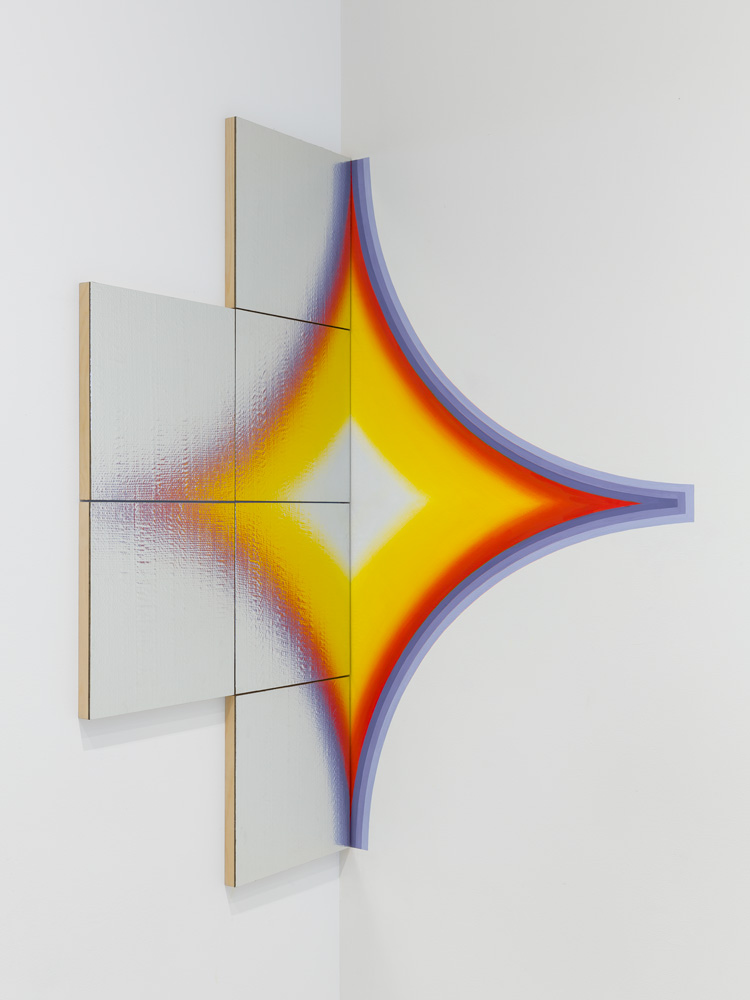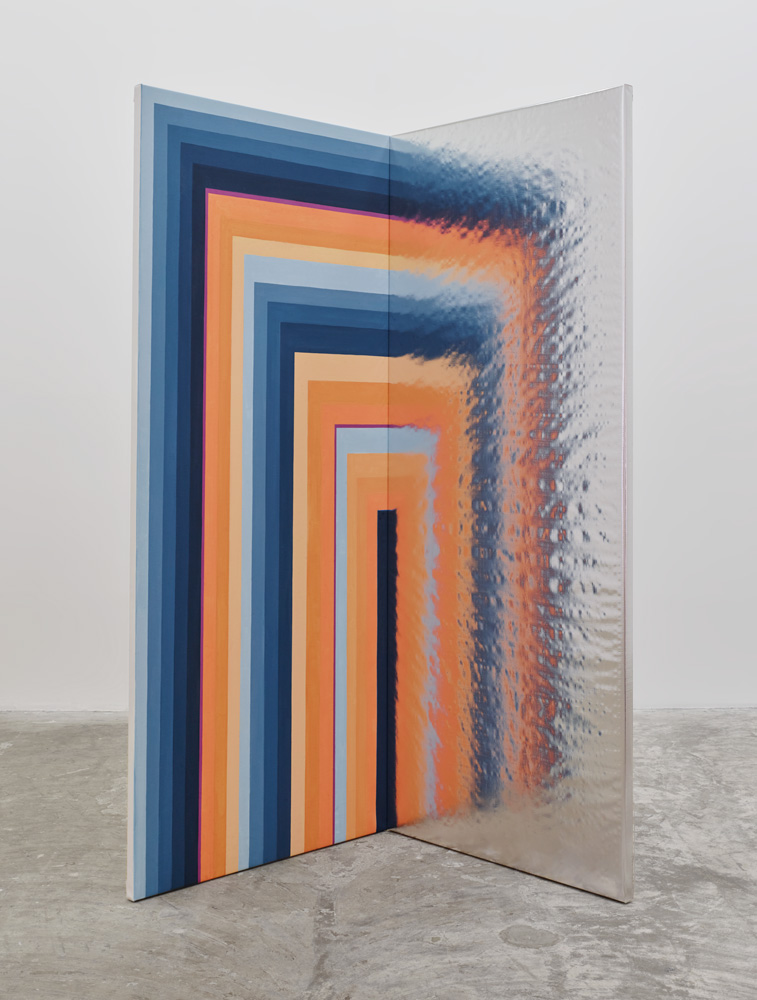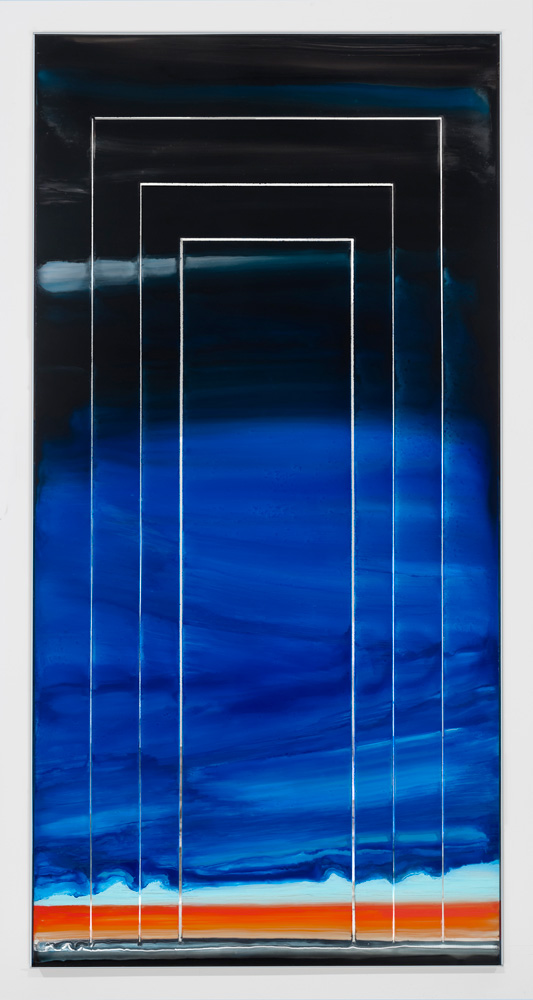Lisa Beck
Lisa Beck received a BFA from RISD. Her work has been exhibited in the United States and internationally in venues including Elizabeth Dee Gallery (NYC), Feature Inc. (NYC), Paula Cooper Gallery (NYC), de Pury & Luxemburg (Zurich), PS1 (Long Island City), White Columns, (NYC), MAMCO – Museé d’ Art moderne et contemporain (Geneva), and the New Britain Museum of American Art (New Britain, CT), and Galerie Samy Abraham (Paris). She was a recipient of the 2012-13 Marie Walsh Sharpe Space Program Studio Residency in Brooklyn. Her work is in the collection of the FRAC Pays de la Loire in France and numerous private collections. She lives and works in Brooklyn, NY.
Question:
You play with the concept of a door that is blocked by a reflective surface— a sort of playful, fun house trick. How do formulations of physics (i.e. infinity and continuous space) factor into your paintings?
Answer:
Paintings have a long history of functioning as a window or door into an illusionistic world. What I do is part of that lineage, but with an element of reflection or doubling added. As far back as the early 90s, I’ve been incorporating mirroring and symmetry in my work, using varying degrees of actual reflection along with painted surfaces.
Many of my works are hung in corners, using these painted and reflective elements. In these large, freestanding pieces, the painted side has only a series of nested right angles. But the reflective half does not block the door image—rather it is what makes the door shape exist. I’m not trying to trick anyone. I’m combining different visual experiences together to construct an image in the same way the sense of continuous space is something that we construct from the bits and pieces of our perceptions. The image isn’t fixed. It shifts and changes as the viewer moves around it and sometimes disappears altogether.
Other recent works of mine combine reflection and paint in a different way. I’ve been painting on glass mirrors, leaving lines of reflective surface exposed in a fluidly painted surface.
The door or portal motif came to the fore a few years back, after a period when several people close to me died. I had started using this image of nested square arches like doorways one inside the other. I was thinking a lot about transitions and passages, and I came across an image from an Egyptian pyramid’s tomb chamber. Carved into the rock wall was a bas-relief, using the same nested door motif I had been working with. There was no opening in it, just the nested outlines in the solid wall. This “false door“ was always situated inside the chamber on the west facing side, where the spirit world was thought to be located. It was the portal through which this world and the other world could connect. I think artworks can function in that way too – as a portal between worlds, between minds, between times.








